September 24, 2024
Small Yard Makeover: From Grass to Wildlife Diversity
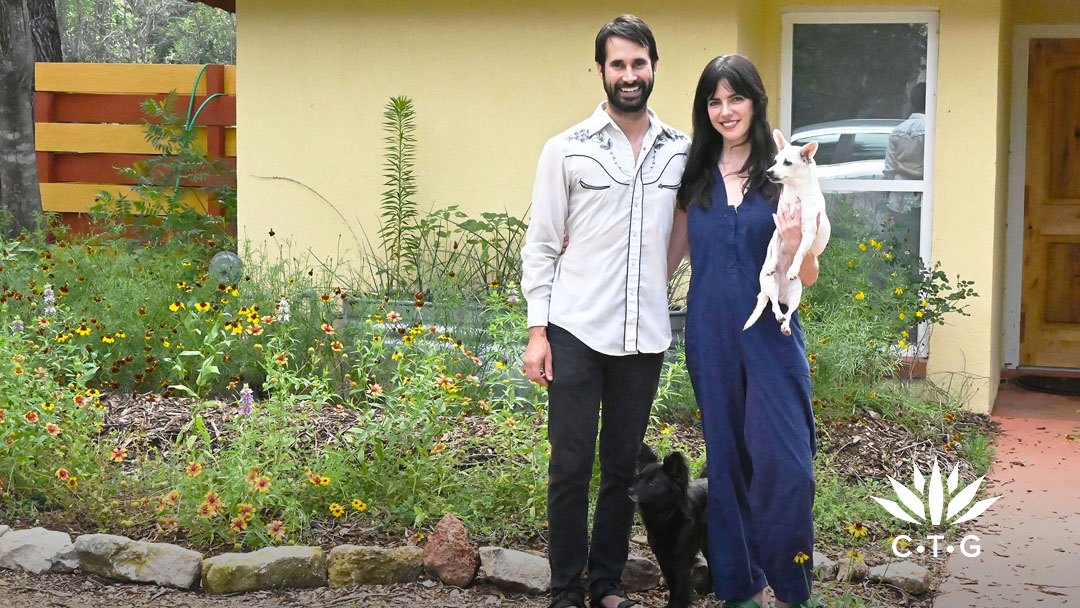
In summer 2023’s extreme heat, Chris Garza sheet mulched his small front yard to kill Bermuda grass and invasive weeds. An ISA Certified Arborist, ecologist, environmental scientist, and mycologist—Chris applied his experience to restore soil health and wildlife diversity when he and Bre Enright bought their first house.
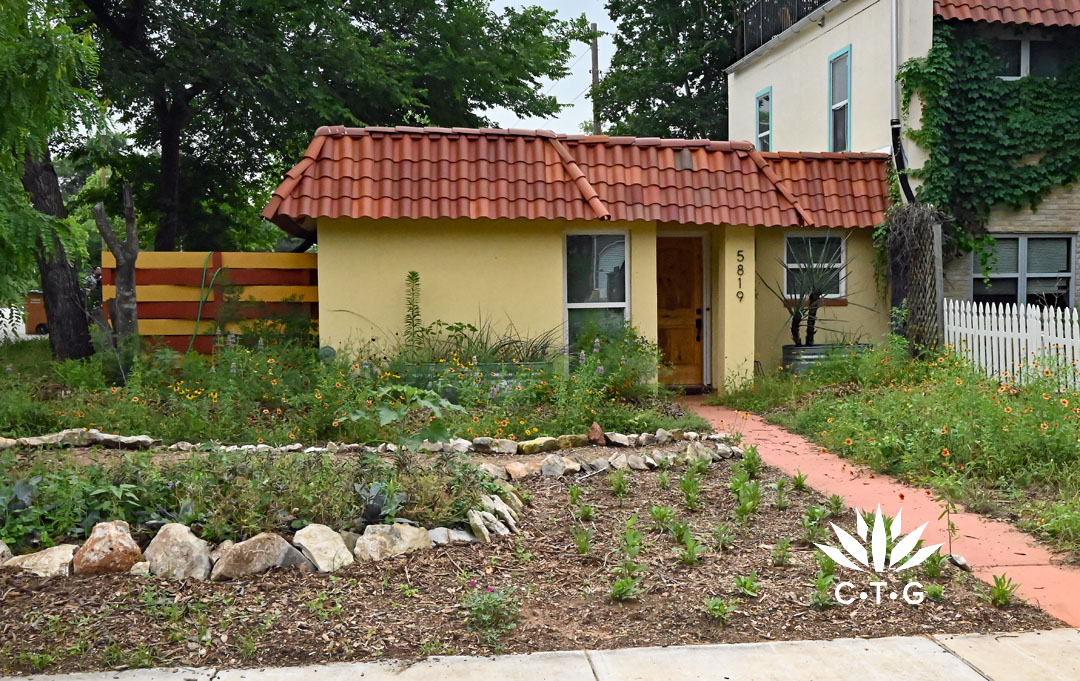
When we met them in May 2024, the garden was less than a year old. “I think a lot of my choices are just based almost exclusively on diversity. If you think about increasing your diversity in general and your landscape, you’re going to have seasonal interest no matter what, right?” he said.
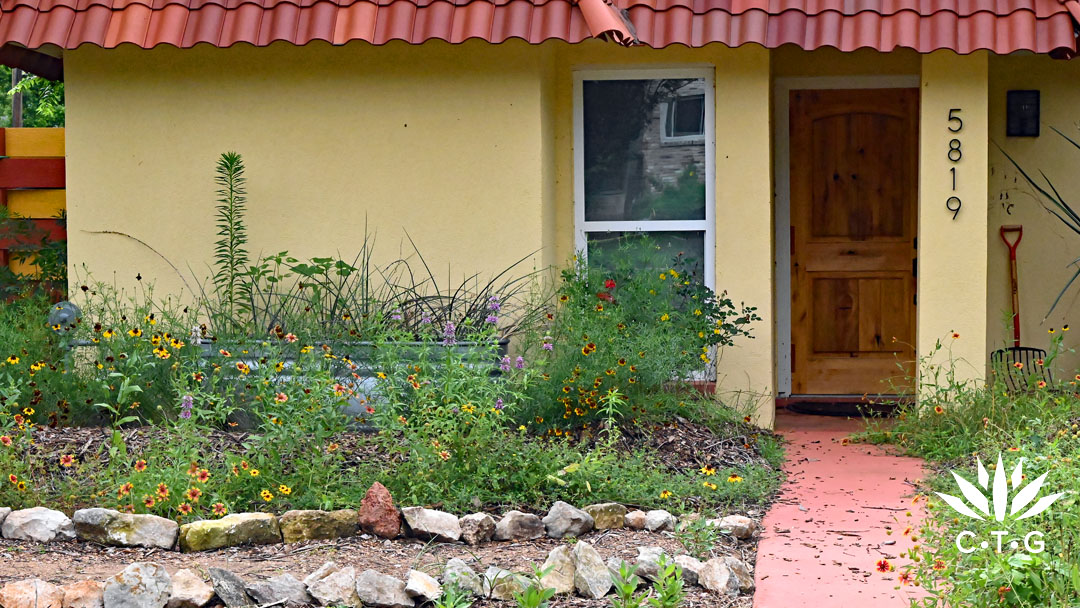
They moved in April 2023, but didn’t start planting until the fall. I wish I’d been as thoughtful as Chris when I started my yard–restoring soil health, working with runoff patterns, and choosing suitable plants for his soil.
On move-in day, though, he was out chopping back an invasive ligustrum and hiring someone to cut down a huge chinaberry in back. In his job with an environmental consulting firm, he eradicates invasive species, so living with them was not an option!
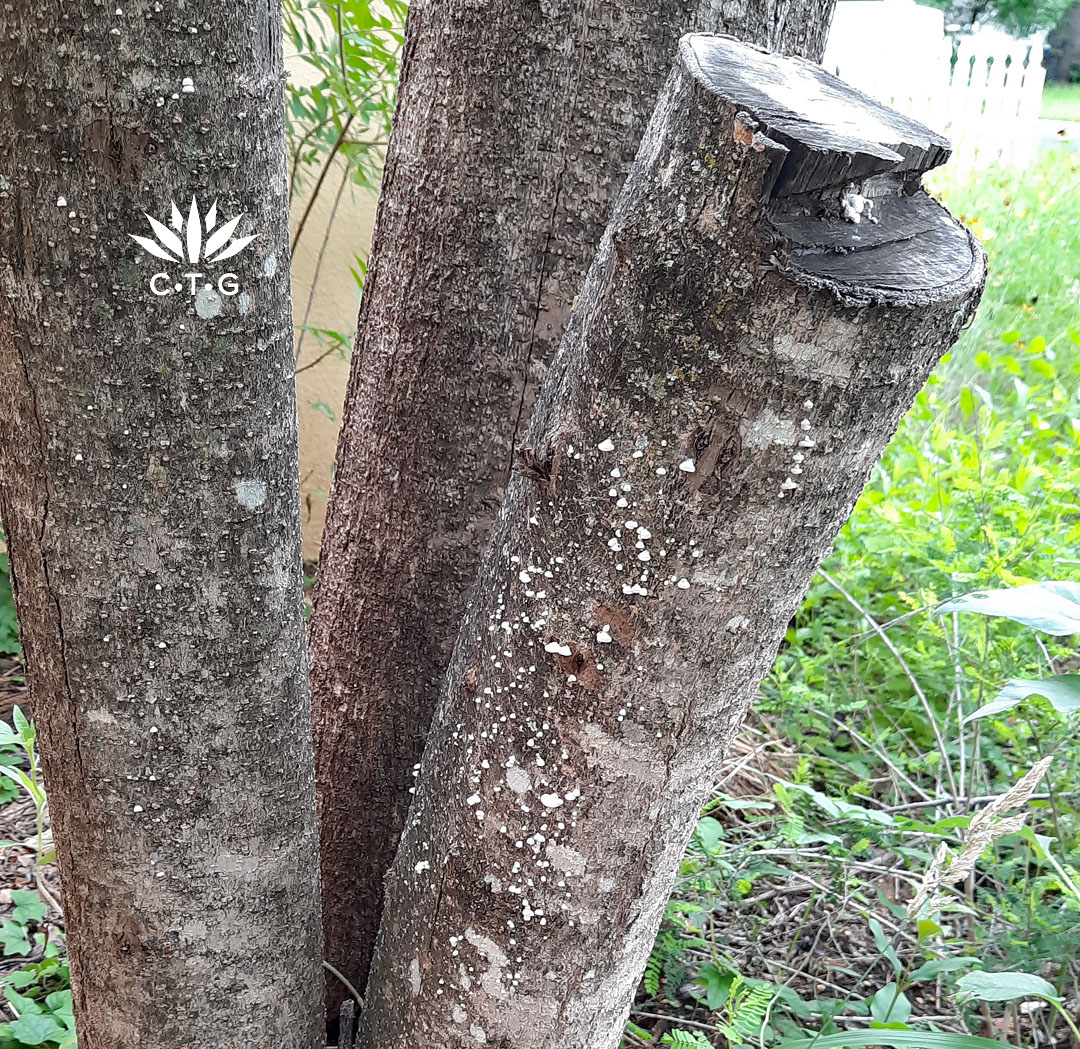
“I left snags that are not tall enough that if they were to fall over, they would hurt anything, but I wanted to be able to inoculate them with fungi,” he said. He inoculated the ligustrum with turkey tail mushrooms, but these fruiting ones are splitgill.
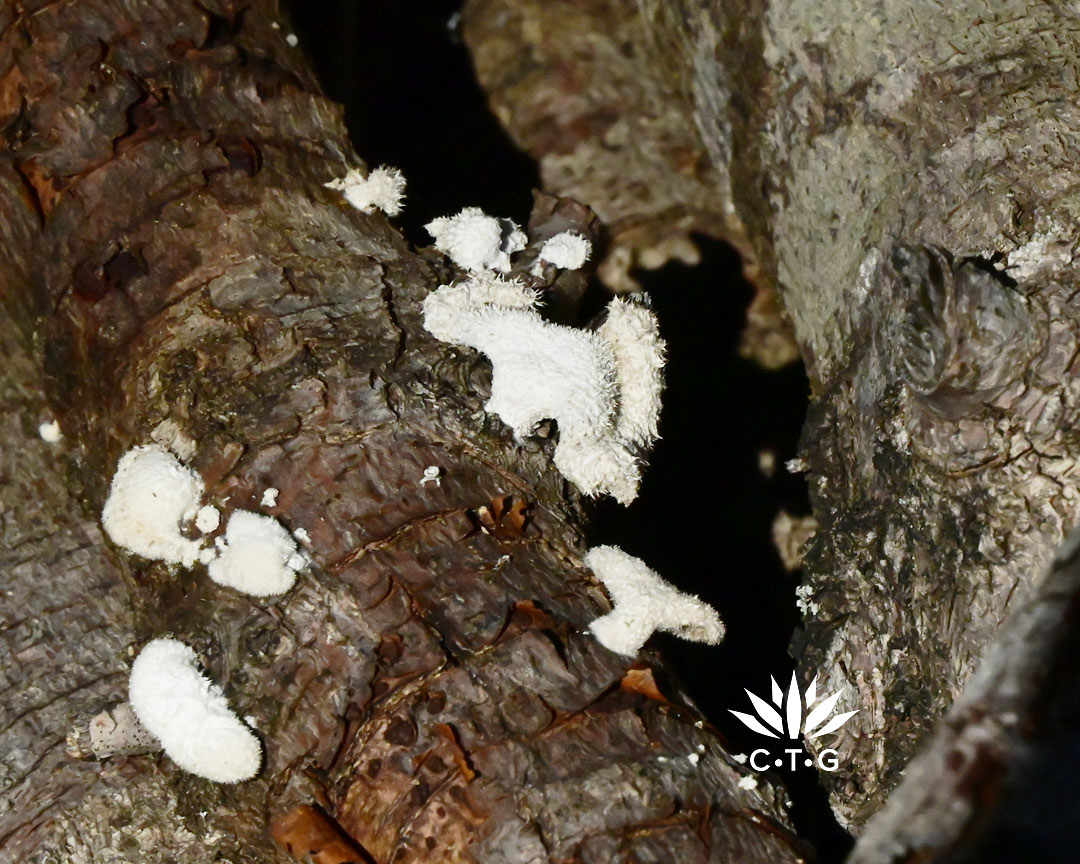
I even had splitgills last February–identified by Chris–on my log pile, prunings from Uri and 2023’s ice storm.
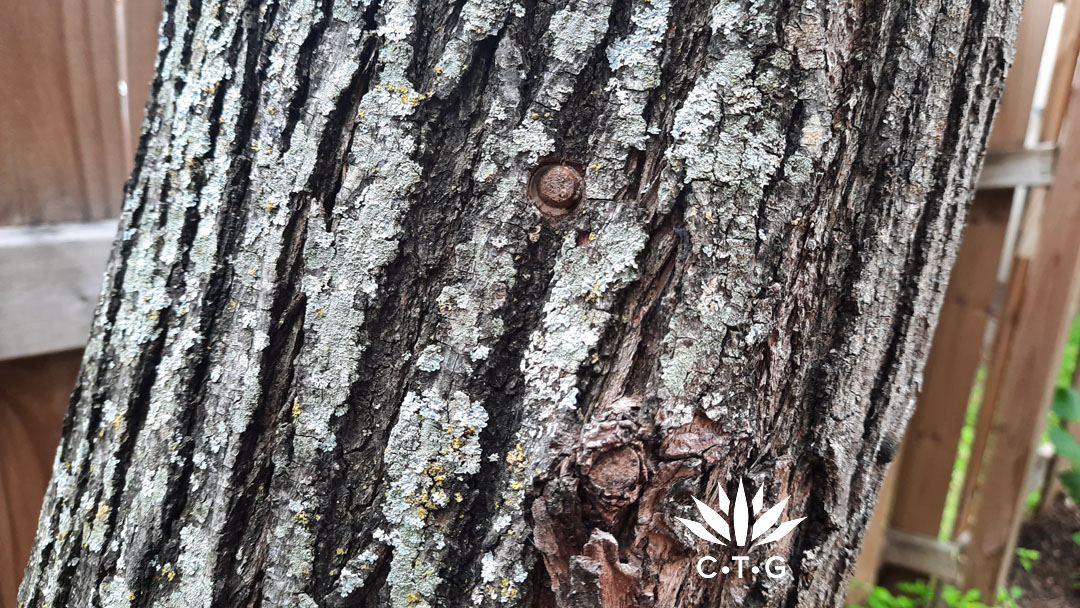
Now, here’s the best housewarming story ever! Chris made an inoculation station where people could decompose negative thoughts/behaviors, emotional baggage–you know the drill. “They wrote it down on a little piece of paper, wadded it up, and drilled a hole into the chinaberry,” he said. “They soaked the little paper in some water, pushed it into the hole, and then they put an inoculated dowel of oyster mushrooms into the hole as well.” As the fungi decompose the tree, everyone’s negative thoughts decompose as well. What a great idea!
Later at the party, a springtime gullywasher rolled in, shedding furious rainfall from the flat roof to one side of the house. . . and then into the house. “And so we had flooding during our housewarming party, and I was running around like crazy trying to soak up all this water,” he said. So, his first yard project was redirecting rainwater to prevent future flooding.
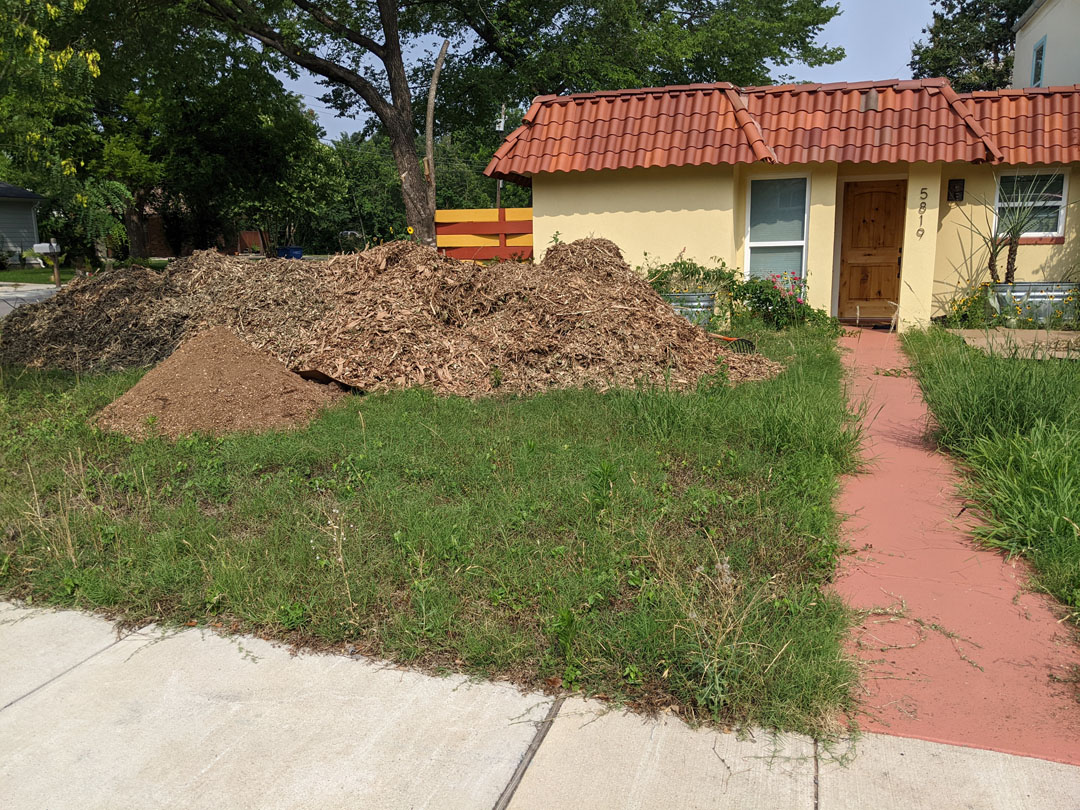
At the same time, he wanted to get rid of the weedy Bermuda grass lawn. For the least damage to the soil life–fungi, microbes, and macro invertebrates–he buried his yard in mulch, smothering the grass in that summer’s record heat. Chip Drop dumped a whopping pile that Chris left in place for 6 months. Photo by Chris Garza.
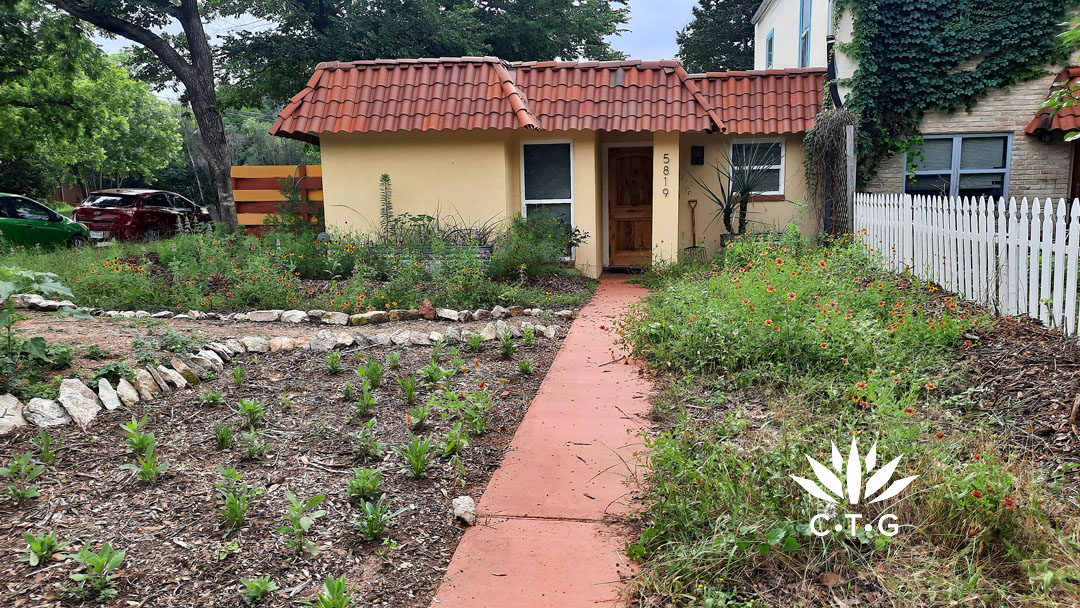
Then, he started scraping mounds of it away, building up berms in some spots. For paths and planting areas, he laid down cardboard, followed by 6 to 8-inches of mulch. “I’m slowly decomposing that mulch using Central Texas Mycological Society’s recycled mushroom block program. So they have multiple spots around town where you can pick up mushroom blocks,” he said.
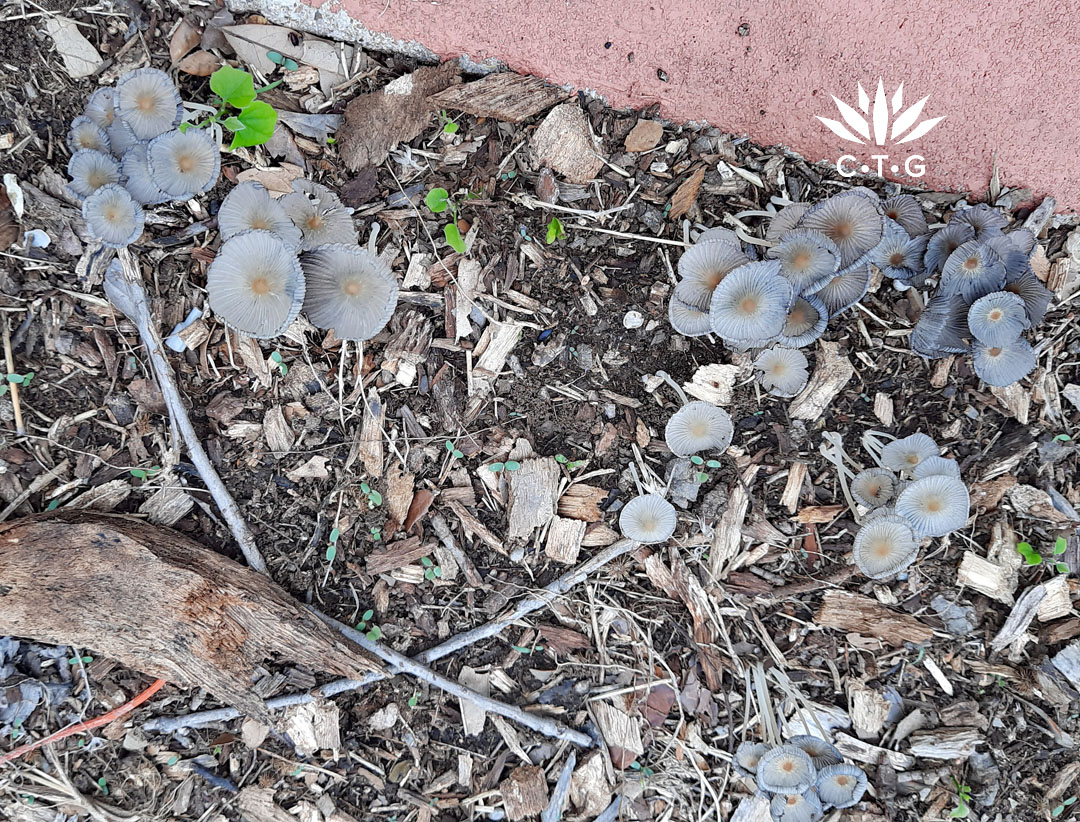
After spring rains, wild, INEDIBLE mushrooms like pleated inkcaps pop up, hard at work to decompose the mulch and build soil health. I’m sure you’ve seen them, too, as I have in my mulch.
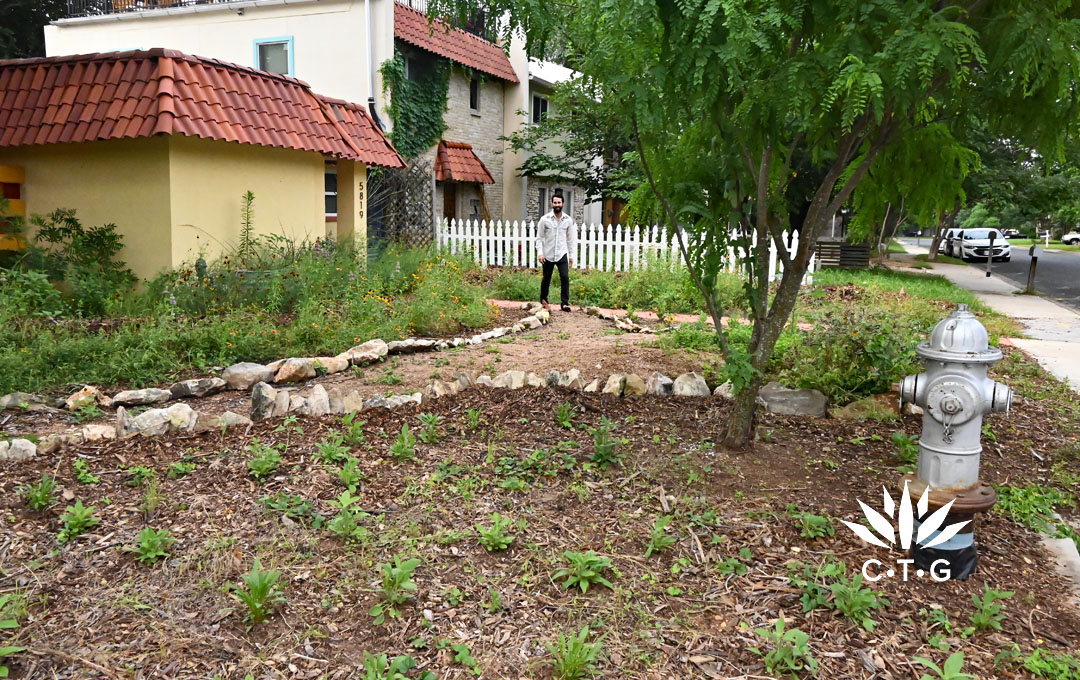
Chris excavated soil from the side of the house, creating swales–essentially low trenches–to direct water away from the house.
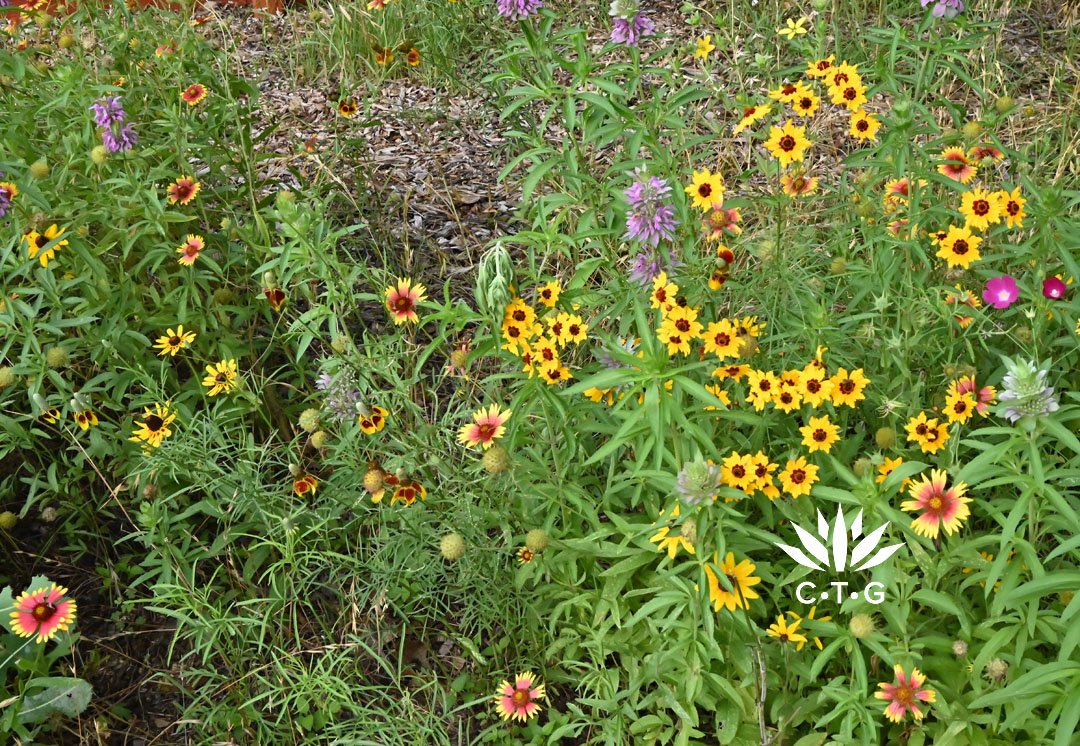
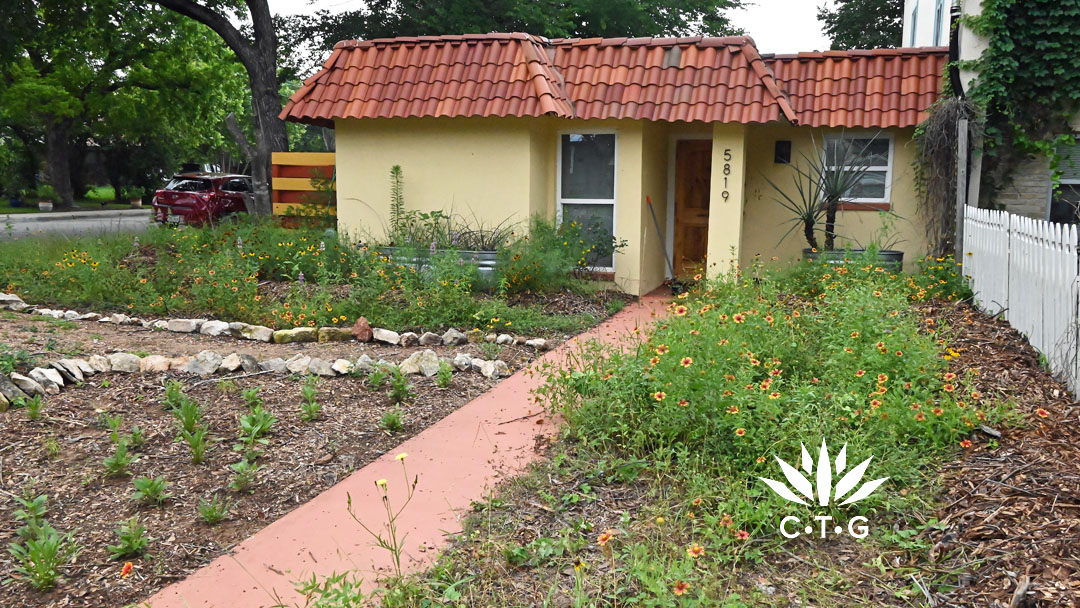
He deposited the soil in front for a seasonally-diverse plant pocket. Then, he sourced plants from friends and planted seeds and plugs. He starts some seeds in four-inch trays to give them a head start.
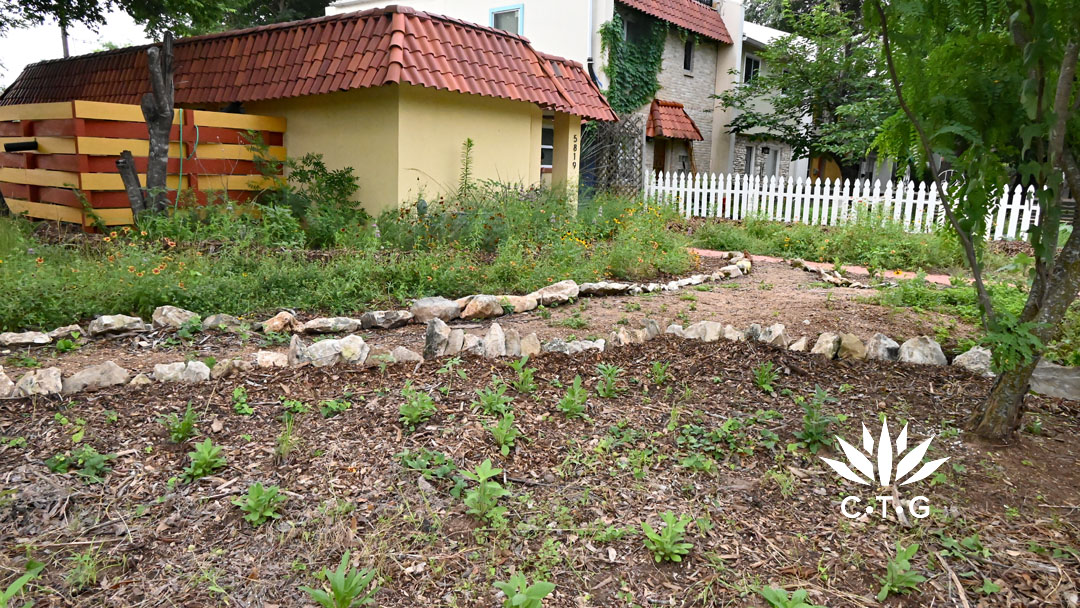
So far he’s got lanceleaf coreopsis, black-eyed Susan, gaillardia, bee balm and Mexican hat, along with an assortment of other perennials.
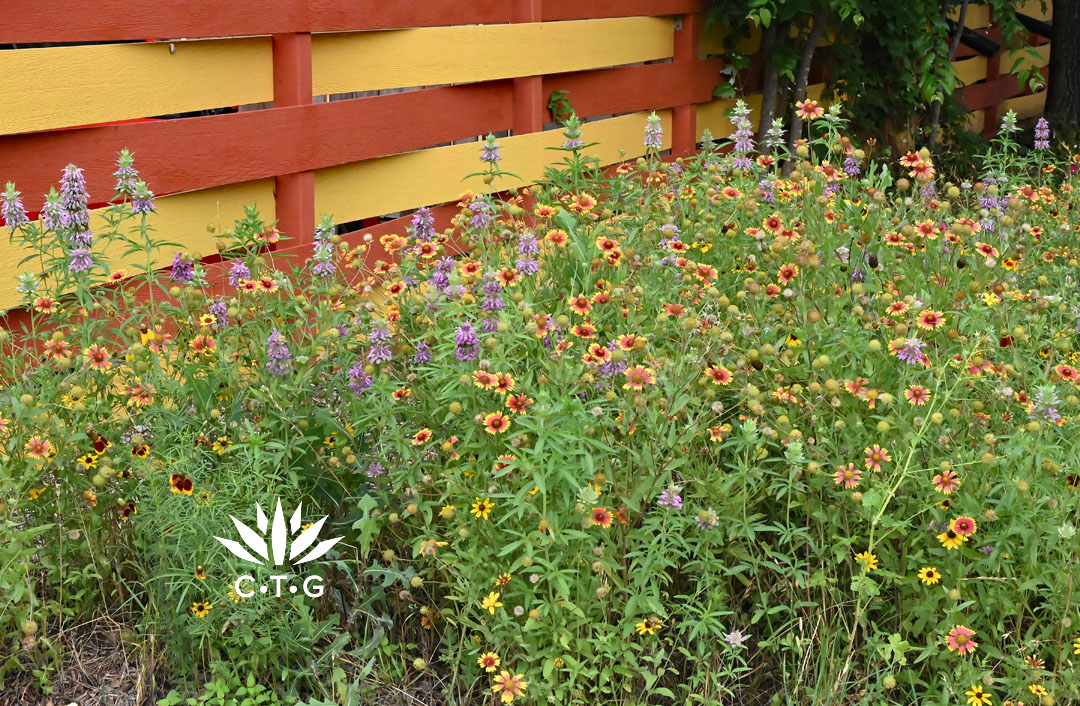
Along the side of the house, where it’s shadiest, he’s planted native grasses (some were already there) and lots of wildflowers. Snails like this spot, so it’s also a great spot for fireflies.
“The firefly larvae tend to eat things like worms and snails and slugs. So, I think, all the snails are probably contributing to the firefly population in the neighborhood,” he noted.
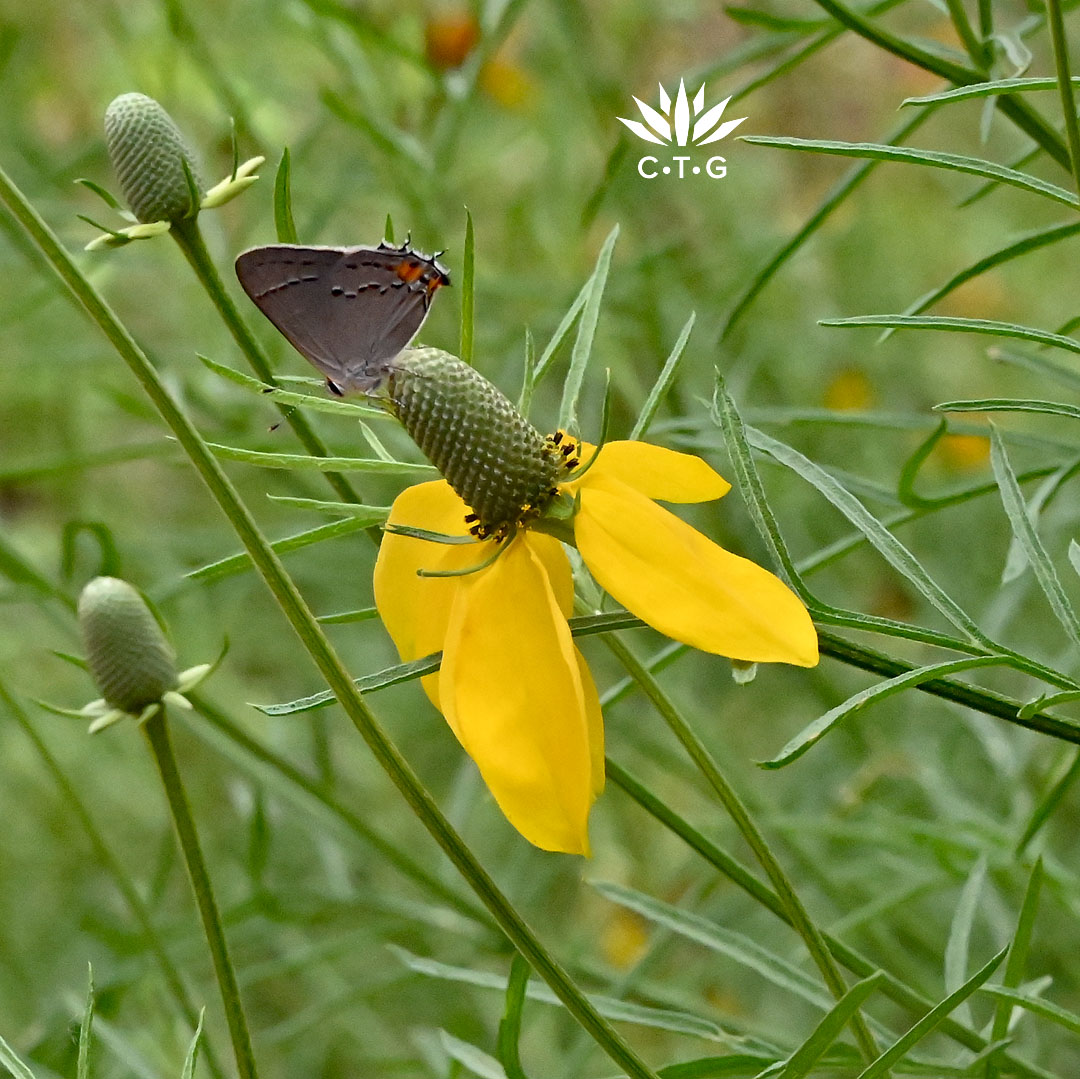
“So I want to support not just the pollinators and the pretty butterflies and bees, I want to support the aphids because they support ladybugs or, you know, praying mantises and other insects like that.” I spotted this Gray Hairstreak on yellow Mexican hat.
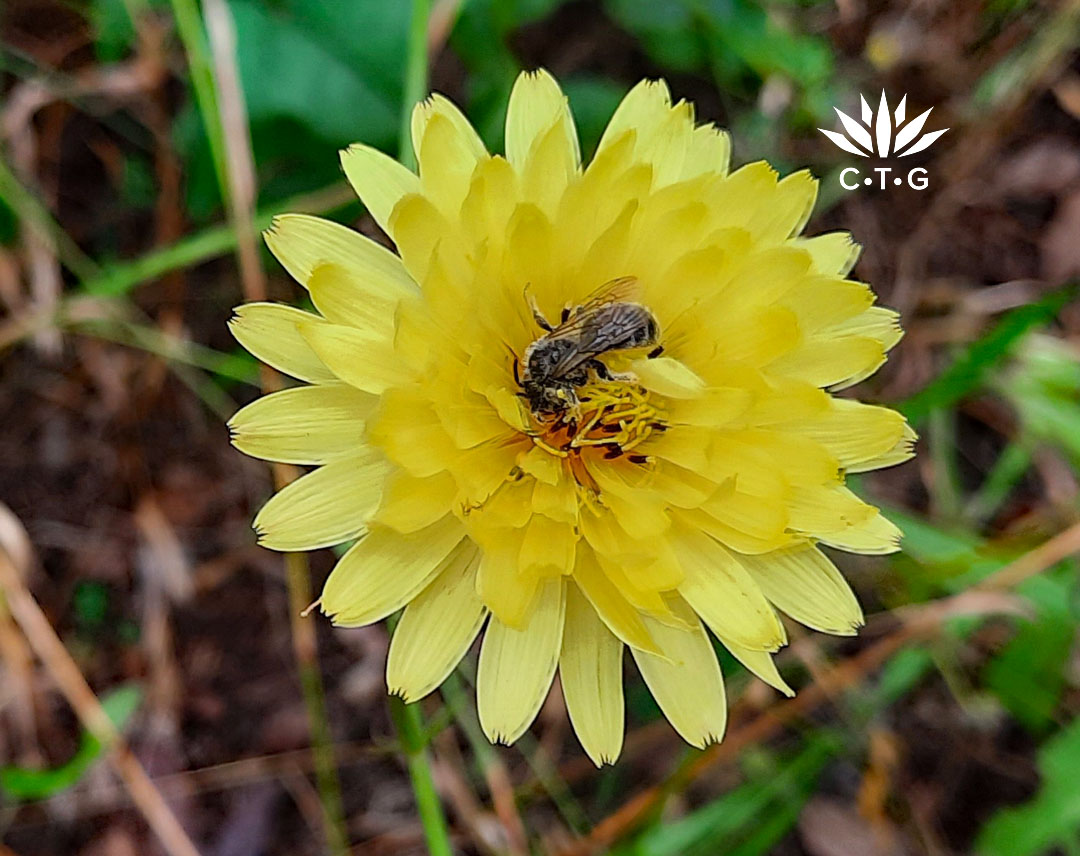
When I first got my yard, I kept a journal of what plants showed up when, including seasonal natives. But I wish I had started an inventory like Chris has. Here’s native Texas dandelion, smallflower desert-chicory.
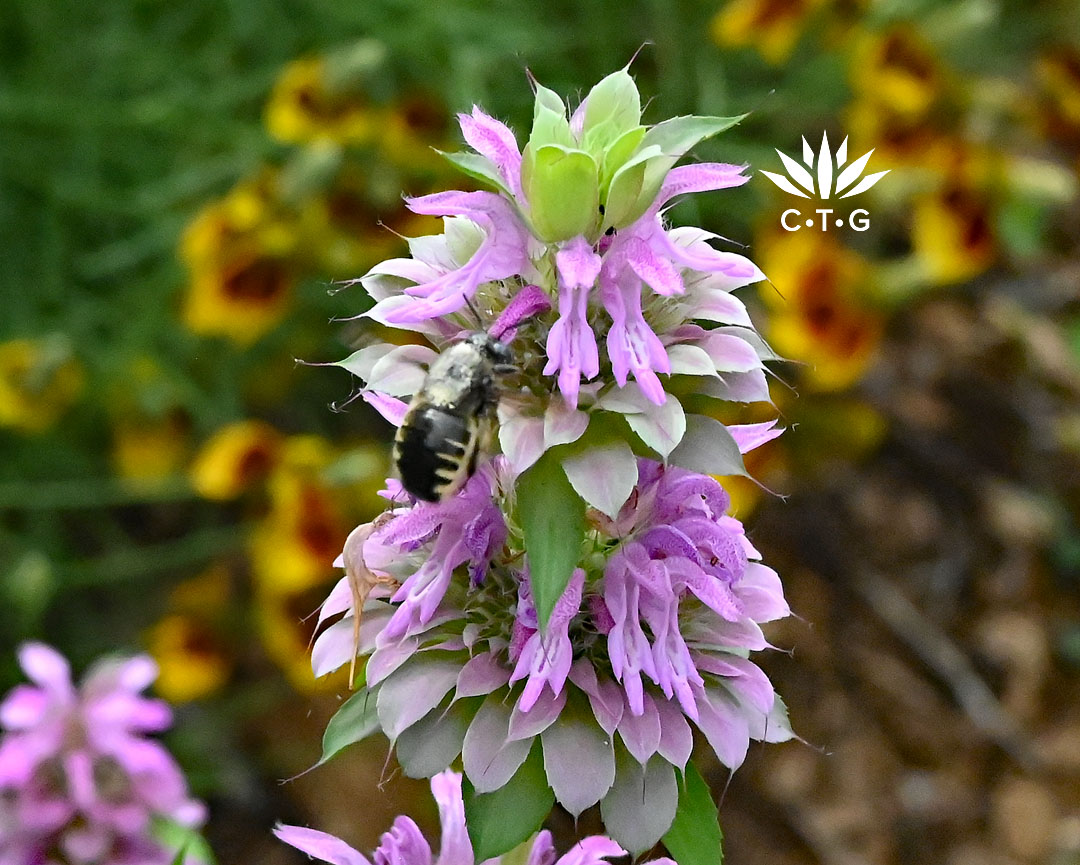
I’ve learned a lot from his iNaturalist profile and almost 8,000 observations of 2500 species of animals and plants. So let’s hope I’m correct that this is a carpenter-mimic leafcutter bee on his bee balm!
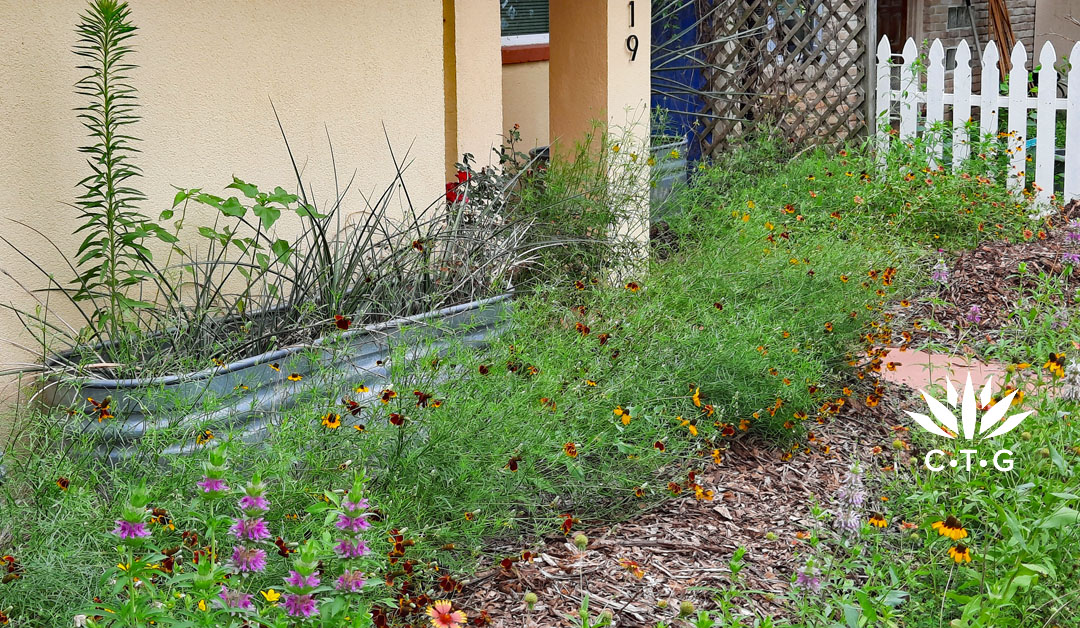
“When I first moved in, before I covered my yard with mulch and everything, I did an inventory of all the plants that I could find on my property,” he said.
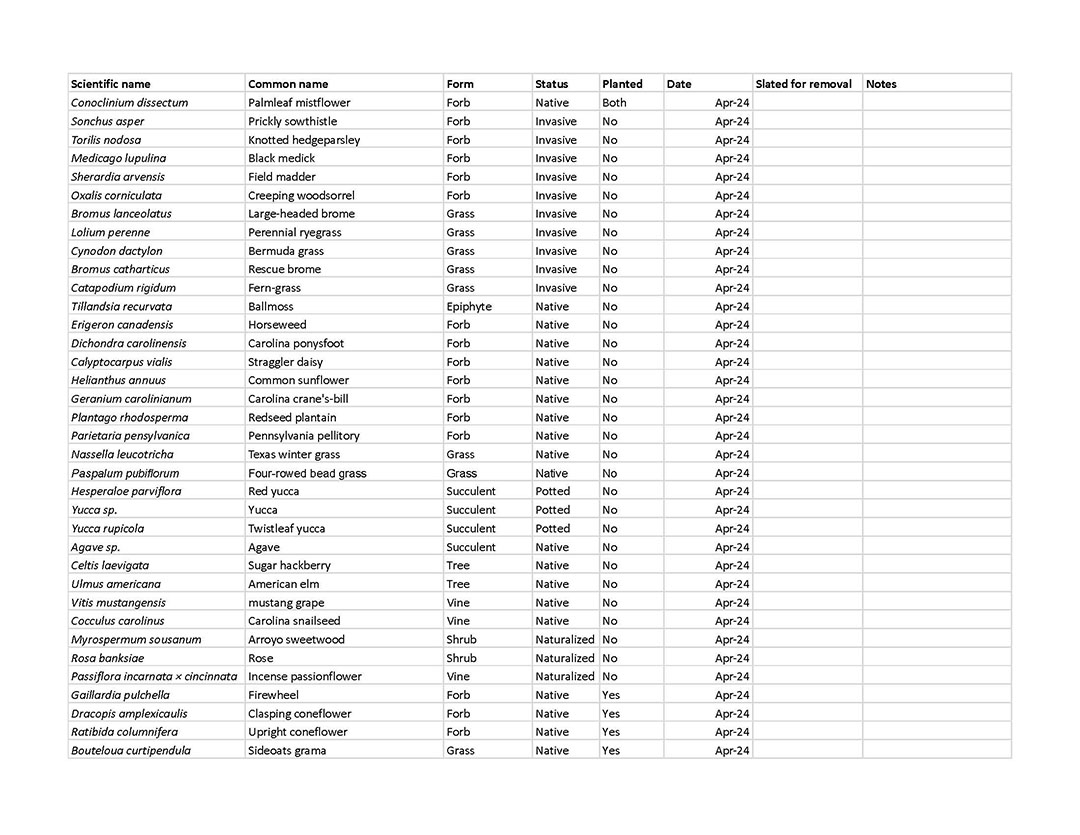
“Now my goal every spring is to do another inventory and see what’s changed. I’ve classified things into whether or not they’re native, invasive or naturalized or whether they were planted or whether they just showed up on their own.”
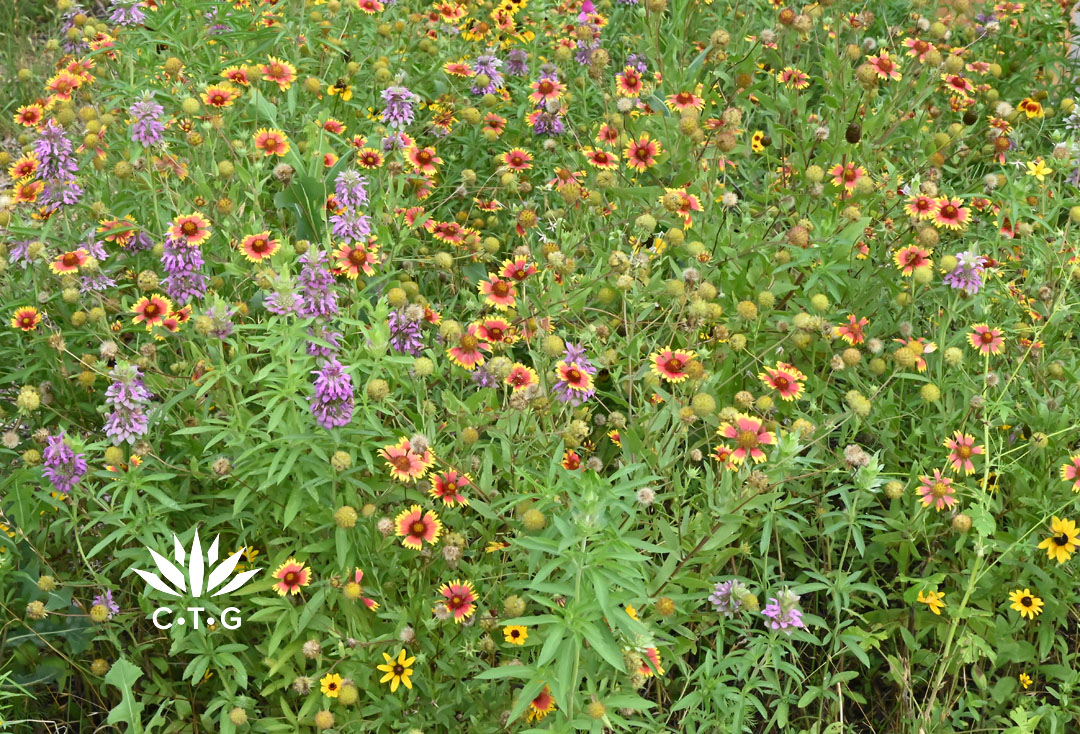
“It’s been really fun to track the changes in my yard, even though it’s only been one season, it feels like there’s been a lot of changes. I want to contribute not just to the diversity of my yard, but to the diversity of the neighborhood.”
Watch now for lots more!
Thank you for stopping by! See you next week when we premiere a new season! Linda

